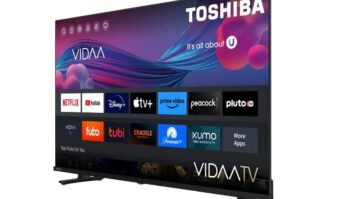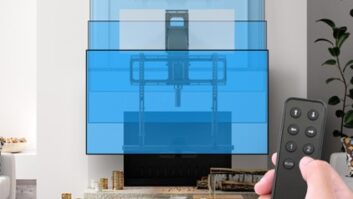When you get to a certain age, a dozen years doesn’t seem too long ago. But when you look back closely, the passage of time really seeps in.
In this case, reading the news of 1994 from the pages of TWICE reminded me of that. For instance, the precursor of today’s Consumer Electronics Association (CEA) reported that the year’s CE factory sales were $56 billion. By comparison, CEA reported that CE factory sales in 2005 were $125.9 million.
The two product category stars were digital video satellite receivers and personal computers.
Format wars were as popular back then as they are today. Philips and its allies were still pushing its backwardly compatible Digital Compact Cassette (DCC) while Sony and its backers trudged on with MiniDisc in 1994.
Part of audio’s future was evident that year. Pioneer introduced a write-once recordable CD deck at CEDIA in September with a $4,000 suggested retail and CD-R discs that fit 60 minutes of music at $25 each.
Sharp, which surprised a lot of people with its innovative Viewcam LCD screen camcorder in 1993, expanded its lineup the following year and got plenty of competition.
In video games, too many game systems abounded. CD-i from Philips, Panasonic-backed 3DO, Sega’s CDX, Nintendo’s Super NES and even JVC got into the act with its X’EYE system. In May, TWICE reportrd that Sony was working on something called “PS-X” that would later become PlayStation.
In 1994, CES held two fully configured shows for the last time; “Winter CES” in January (as it was called then), and Summer CES that June.
Illustrating the growing popularity of personal computing, COMDEX was still around and thriving with two shows annually.
PC sales were booming in 1994. At June’s PC Expo, Intel president Andy Grove predicted that computers would outsell TVs by 1999. And the first inklings of a CE/PC convergence began with everyone talking about “multimedia PCs,” basically what we take for granted now: computers that can play music and games.
The Internet was not mentioned by name very often in our coverage, but the “Information Superhighway” was cited. In coverage of PDAs — General Magic, Newton from Apple and Sharp, Zoomer from Casio and many more — featured going online for information. Cellular phones makers, whose products were getting smaller and more popular, were eyeing the mass market.
At Winter CES, Panasonic showed an analog wall-mountable Flat Vision featuring a 14-inch LCD screen that was “less than 4 inches deep” for a $3000 retail price.
During Toshiba’s line show that June, it discussed a possible 1995 introduction of a multimedia system that would be “affordable and versatile.” What we didn’t know then was that digital video disk formats were being worked on in 1994 by rival camps. Sound familiar?
The product star of the year was direct-to-home satellite service from Thomson Consumer Electronics. Its RCA Digital Satellite System began the digital TV era. DSS made its main retail debut in June, most notably at Mississippi’s Cowboy Maloney’s Electric City chain. Developed in conjunction with Hughes’ DirecTV operation, it featured subscription packages from DirecTV and USSB. Priced at $700, it offered 150 channels but no local programming.
At retail, Circuit City and Best Buy were expanding nationally. Montgomery Ward bought New England hardware specialist Lechmere, but both eventually closed. Michigan’s Fretter bought the old Silo chain, closed it, and began to sell its locations. Eventually Fretter met the same fate. RadioShack, corporately called Tandy back then, expanded with a chain of 180,000-square-foot Incredible Universe stores to sell brand-name CE products. It also continued to expand the two-year old Computer City chain. Both chains failed to survive the 1990s.
Best Buy’s founder, chairman and CEO Dick Schulze outlined, in a TWICE special report, what his plans were for the chain, which is chillingly accurate in hindsight. “We think that consumers really do prefer the shopping experience in our store. We would hope to be in position to generate, on average, better than $30 million in each store [annually by 1998]. That’s $12 billion. With a little inflation in the next four years that could be $13 billion or $14 billion — that’s 20 percent of the nation’s business. We think we have a reasonable chance of getting there,” said Schulze.
Excluding entertainment software, major appliances and other categories, TWICE reported Best Buy’s CE sales for calendar year 1998 at $9 billion. And according to our most recent TWICE Top 100 CE Retailers report for calendar year 2005 (TWICE, May 8, 2006, p. 1), Best Buy had CE sales of $23.7 billion by itself.
As I said earlier, 1994 was a long time ago.













